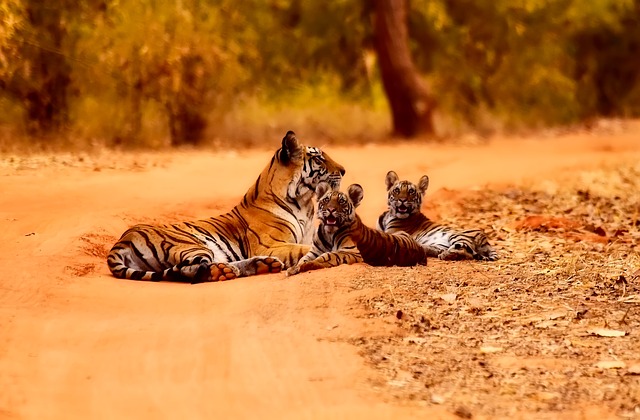On International Tiger Day today Prime Minister Narendra Modi released the All India Tiger Estimation Report 2018 revealing that India now has 2967 tigers in the wild. This is 33 percent growth in the tiger population from the last census conducted in 2014.
The Prime Minister said that India had achieved its target of doubling the tiger population by 2022, 4 years ahead of schedule. Nine years ago India had committed to the world in St. Petersburg that it would double its tiger population by 2022.
Also Read: Supreme Court Stops Road Construction Through Rajaji Tiger Reserve
According to the census, Madhya Pradesh saw the highest number of tigers at 526, closely followed by Karnataka at 524 and Uttarakhand at number three with 442 tigers. Chhattisgarh and Mizoram saw a decline in their tiger numbers while tiger numbers in Odisha remained constant. All other states witnessed a positive trend.
The tiger census 2014 had found 2226 tigers in the country while the numbers were 1706 in 2010. In 2006 the world was alerted about the plight of the tigers when the census had shown an alarming 1411 tigers left in India.
A Healthy Balance
In his speech, PM Modi also talked about the need of striking a “healthy balance between development and environment”. “There is a very old debate – development or environment. Both sides present views as if each is mutually exclusive,” he said.
“In our policies, in our economics, we have to change the conversation about conservation,” PM Modi stressed.
“I am confident that India will prosper both economically and environmentally. India will build more roads and India will have cleaner rivers. India will have better train connectivity and also greater tree coverage,” PM Modi added.
While greatly appreciated, the PM’s words come at a time when a group of villagers in Uttar Pradesh’s Pilibhit beat up an adult tigress and killed it. The tigress had last Wednesday attacked and injured nine villagers while they were working in an agriculture field in Deurea range of the Pilibhit tiger reserve.
Such incidents while unfortunate are neither novel nor surprising. Face to face with an apex predator, a mob finds strength in numbers and greater power by lynching rather than allowing the animal to safely go back to the forests.
Deploying forest officials, arresting locals at the time when these incidents occur, seems like giving medication for the symptoms, not the disease. That is because in some ways, over the span of the last couple of decades, with the demarcation between protected forest and human habitations, the divide of laws for animals and laws for humans, people have been led to believe that the wild planet and the human planet are indeed separate entities.
Also Read: It’s Confirmed. Tiger Spotted in Gujarat after 27 Years
India was once home to ten times the number of tigers it has today. Those were the times when the Sundarbans communities or tribes of Arunachal Pradesh or Karnataka lived along with the beast like co-inhabitants sharing the treasures of the land. It is not that violent incidents did not happen during those days. But the respect and reverence for the great beast, and the understanding of an animal’s natural instinct to defend, did stop people from getting bitter and seeking revenge as a mob.
Barring local communities from the protected areas and thus from the conservation process itself has given birth to a generation that has seen tigers only as the predators locked inside forbidden national parks and zoos. Co-existence can only be understood when you see that you are living in a shared habitat, not when a barricade gives you the false notion that the wildlife will always be contained inside and never actually affect your life.
The encounters when they happen thus, with tigers, or leopards or elephants for that matter is often a violent reaction stemming from fear, lack of understanding of the natural instincts, and also the perception that the wildlife is ‘straying’ out of the human made boundaries.
India’s tiger numbers are rising and so are the chances of rising human animal conflicts.
The present focus therefore needs to be on ideas that prepare locals living in tiger states to consider peaceful co-existence over conflict. It is not an overnight process but one that gradually creates more awareness; gives people the power to see themselves as saviours and not enemies of the tiger. Communities need to be encouraged to work in tandem with the forest officials and forest officers need to ensure that they encourage community’s participation in each initiative that involves tiger conservation in their areas.
When co-existence becomes a natural instinct again rather than a forced concept, India’s can proudly claim the title of being the safest tiger habitat in the world again and again.
Also Read: Tigers Spotted in New Forest Regions of Odisha
Featured image of Machhli by Christopher Kay via cc/Flickr





